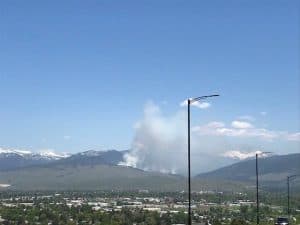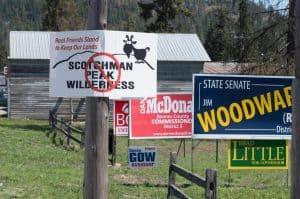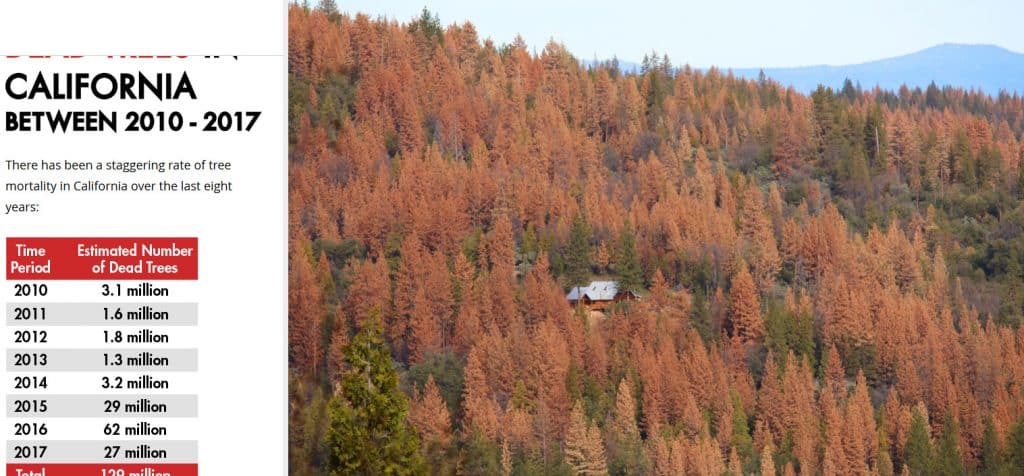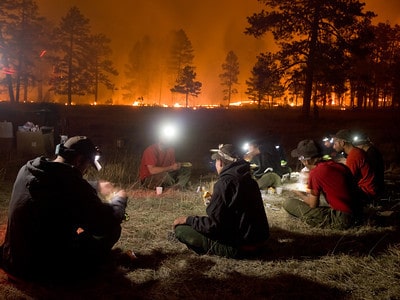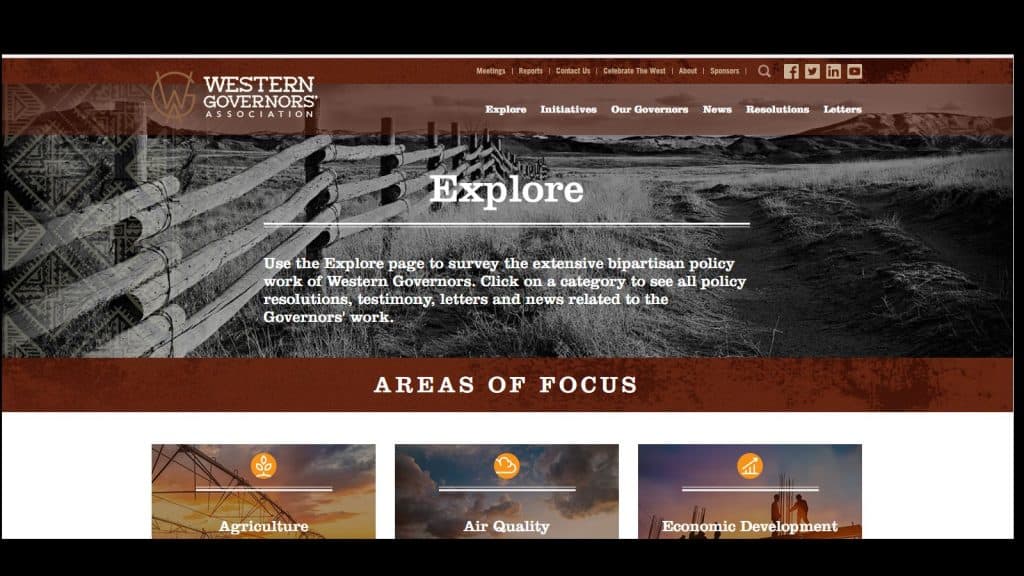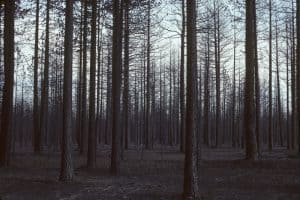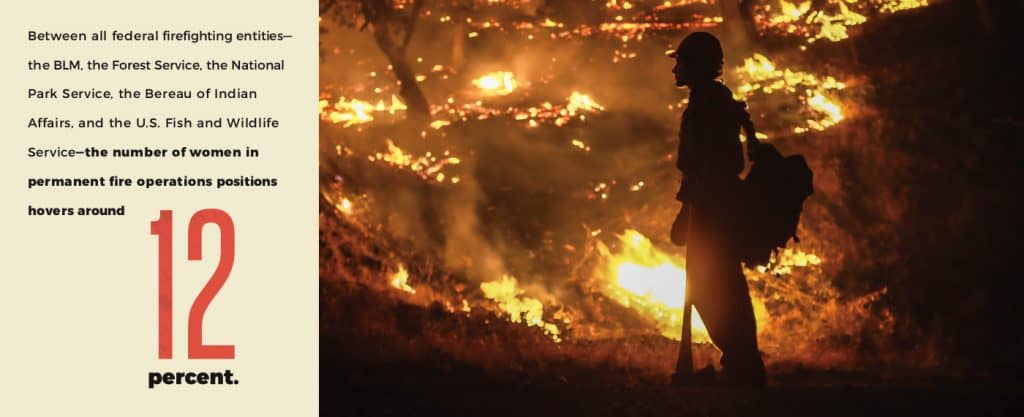 Thanks to Emily Wolfe of the Mountain Outlaw Magazine, for sending her story on BLM efforts to increase women’s participation in wildland firefighting and ultimately to hire “a workforce with ethnic, racial and educational backgrounds representative of the communities they serve—and treating them well enough that they stay.”
Thanks to Emily Wolfe of the Mountain Outlaw Magazine, for sending her story on BLM efforts to increase women’s participation in wildland firefighting and ultimately to hire “a workforce with ethnic, racial and educational backgrounds representative of the communities they serve—and treating them well enough that they stay.”
Here are a couple of excerpts:
BLM manages a 10th of the country’s landmass, or 247.3 million acres, more than any other government agency. Housed under the Department of the Interior, the agency oversees grazing, oil and gas leases, recreation, conservation and other uses. As of July 2017, it had more than 10,400 employees, and nearly 3,000 in its fire program. Of those in fire, 18 percent were women. Among firefighters, particularly the high-level hotshot and smokejumping teams, the ratio is much lower.
The agency’s 11 hotshot crews employ one to three women on a typical 20-person team, and this year there are three female smokejumpers of 140 nationwide. The six- person engine crews that comprise most fire line employees usually have one or two women, or none. Between all federal firefighting entities—the BLM, the Forest Service, the National Park Service, the Bureau of Indian Affairs, and the U.S. Fish and Wildlife Service—the number of women in permanent fire operations positions hovers around 12 percent.
Few women and minorities apply to work on the fire line in the first place, and retention is difficult for all employees. The job’s physical nature is self-selecting, plus most positions are seasonal, based in remote locations, and require long stints away and out of cell reception—all of which double as risk factors for harassment and assault.
Simply injecting women into the workforce isn’t effective. Armed forces in Canada, Norway and Australia have used the critical mass approach to gender integration, a social theory suggesting that 15 to 30 percent of a minority is necessary for that group to succeed. But fire leaders still remember the 1981 settlement to a class action lawsuit that forced the Forest Service in California to match the civilian workforce’s gender ratio, at 43 percent women. To fulfill the consent decree, as it’s still known, women were sometimes promoted over more qualified men, leading to resentment, attrition and degradation of institutional knowledge.
That resentment still lingers. “I was told three years ago during a friendly conversation with a male coworker that I was only hired because I was female,” wrote Lorena Williams in a High Country News opinion piece published in March. “Women are often seen as intruders, as tokens who were only hired to meet some kind of quota. We are treated as pariahs in our professional fields, regarded as little more than sexual-harassment cases waiting to happen.”
…
In February, Strelnik went public about the repeated sexual harassment and retaliation she experienced over her 17-year Forest Service firefighting career, a #MeToo moment she says was made possible by the catharsis of working on the initiative. Amos Lee, a supervisory engine module leader at BLM’s Boise District, isn’t ashamed to say he wants to spend time with his family instead of being gone for six to nine months each year. Many firefighters do, he says.
This time the assignment is focused on implementation. The project list includes providing family housing and childcare facilities for employees in rural areas; re-evaluating physical testing requirements; and supporting independent, state-level education and mentorship programs. One of their top recommendations is hiring a permanent diversity and inclusion employee, a position BLM fire leadership is now in the process of creating.
